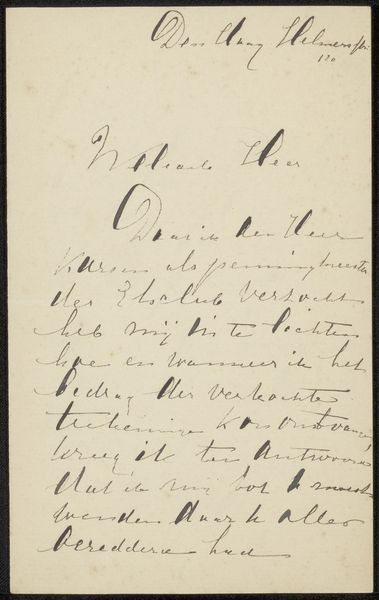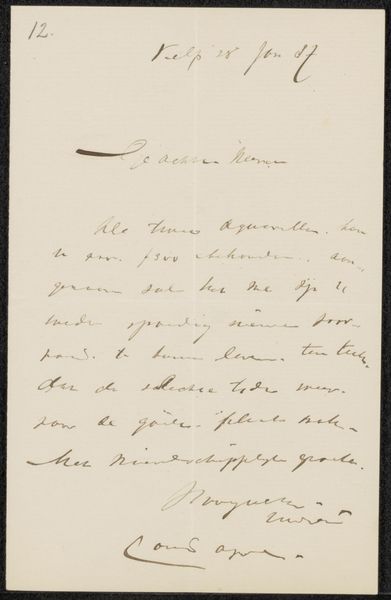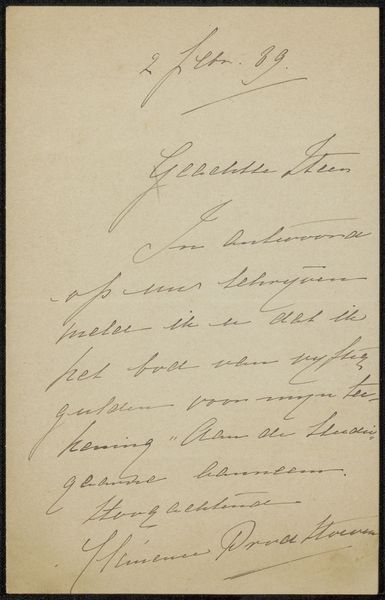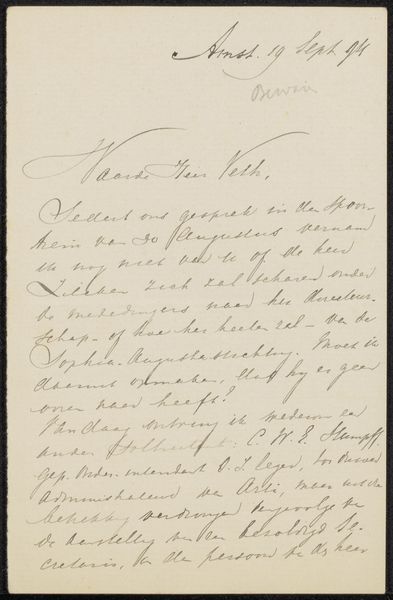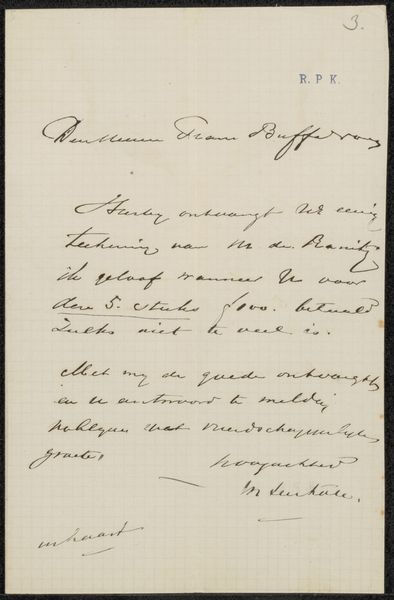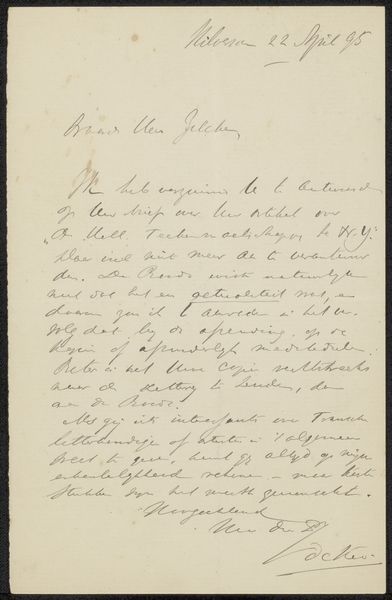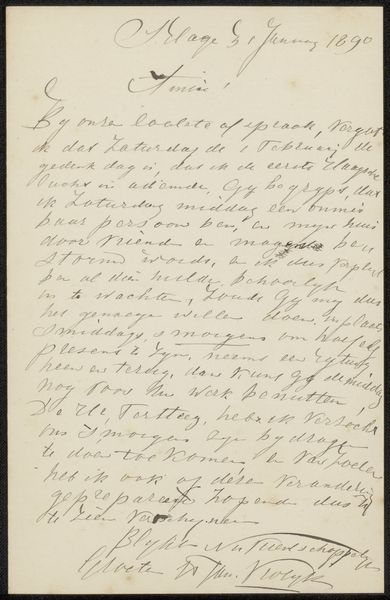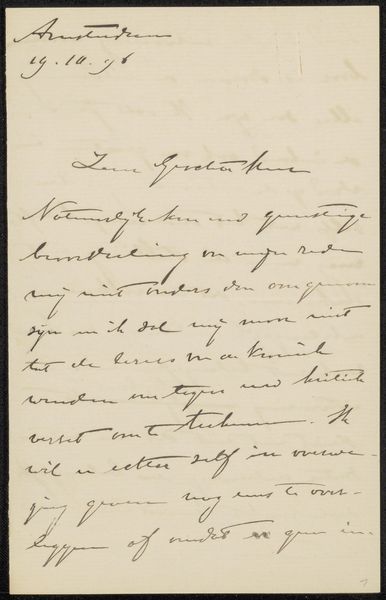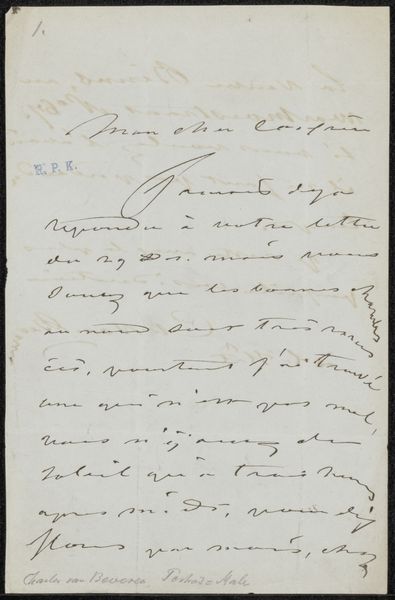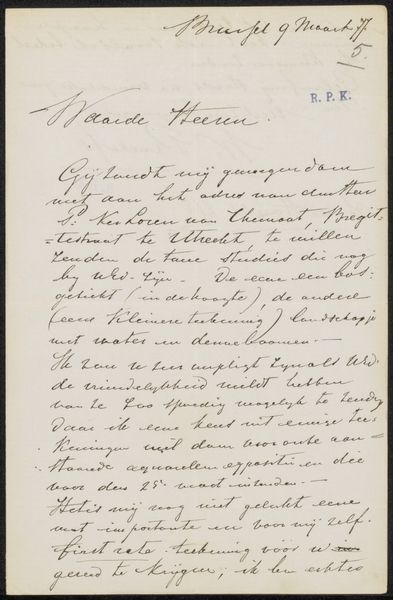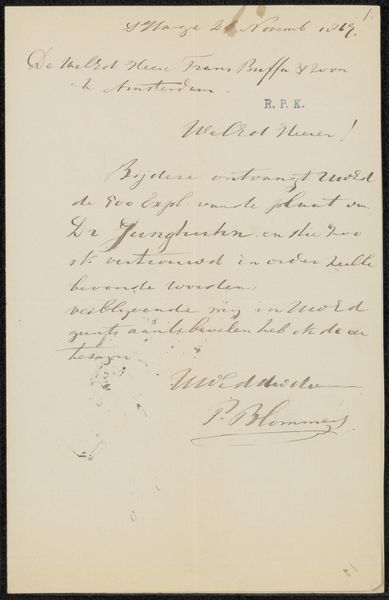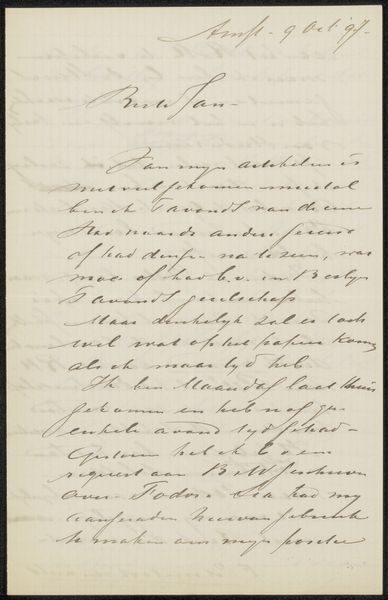
Copyright: Rijks Museum: Open Domain
Curator: Up next is Henri Fantin-Latour's "Brief aan Philip Zilcken," likely composed between 1891 and 1897. What's striking about this work? Editor: Immediately, it's the intimacy, isn't it? It feels like an intrusion, in the best way. The handwritten letter, the personal note - it invites us into a private exchange. Curator: Precisely. This ink on paper drawing provides an example of Fantin-Latour’s social and artistic networks. He penned this missive to Philip Zilcken, a key figure in the art world. It highlights how art unfolds not in a vacuum, but through layers of personal and professional exchanges. Editor: Absolutely, it contextualizes the role of these figures within the larger discourse of late 19th-century art. Were letters common forms of artwork then, almost like pen-ink performance pieces of their time? Curator: You've hit on a key aspect. Epistolary exchanges formed critical conduits for discussing art, arranging exhibitions, and shaping critical opinion. Think of how art circulated then compared to today. Editor: So this "letter" isn't just about content; it is about process and the politics of access. What's being communicated also pertains to who is doing the communication. Who did Fantin-Latour include and exclude through letters such as these? Curator: Exactly. We get to consider the art world's inner workings through seemingly simple lines and sketches, hand lettering reminiscent of calligraphy that hearken back to romantic traditions. Note the flourishes. They signal purpose and also aesthetic sensibilities. Editor: The way Fantin-Latour crafts language, here. It evokes the cultural norms around how communication functions and looks. Are certain scripts more valued? Or certain types of stationary or hand writing? To whom is Fantin-Latour signalling class, distinction, access, or intention? Curator: All that's definitely implied, especially in relation to the status and role of an established critic. So this unassuming document then becomes a stage for navigating social roles and power relations within the art establishment. Editor: I never imagined a quick sketch could tell such a nuanced story. Curator: Indeed. Fantin-Latour provides such a vivid glimpse into the socio-political web that propelled artistic movements of the period. Editor: Thinking about that context makes this feel like more than just a letter now, more like an intentional piece.
Comments
No comments
Be the first to comment and join the conversation on the ultimate creative platform.
